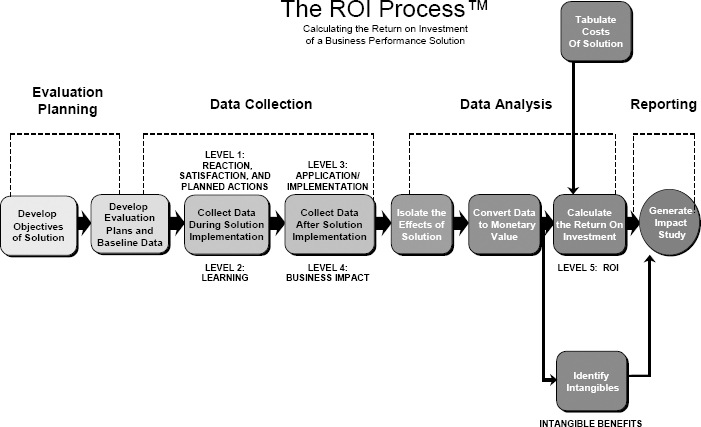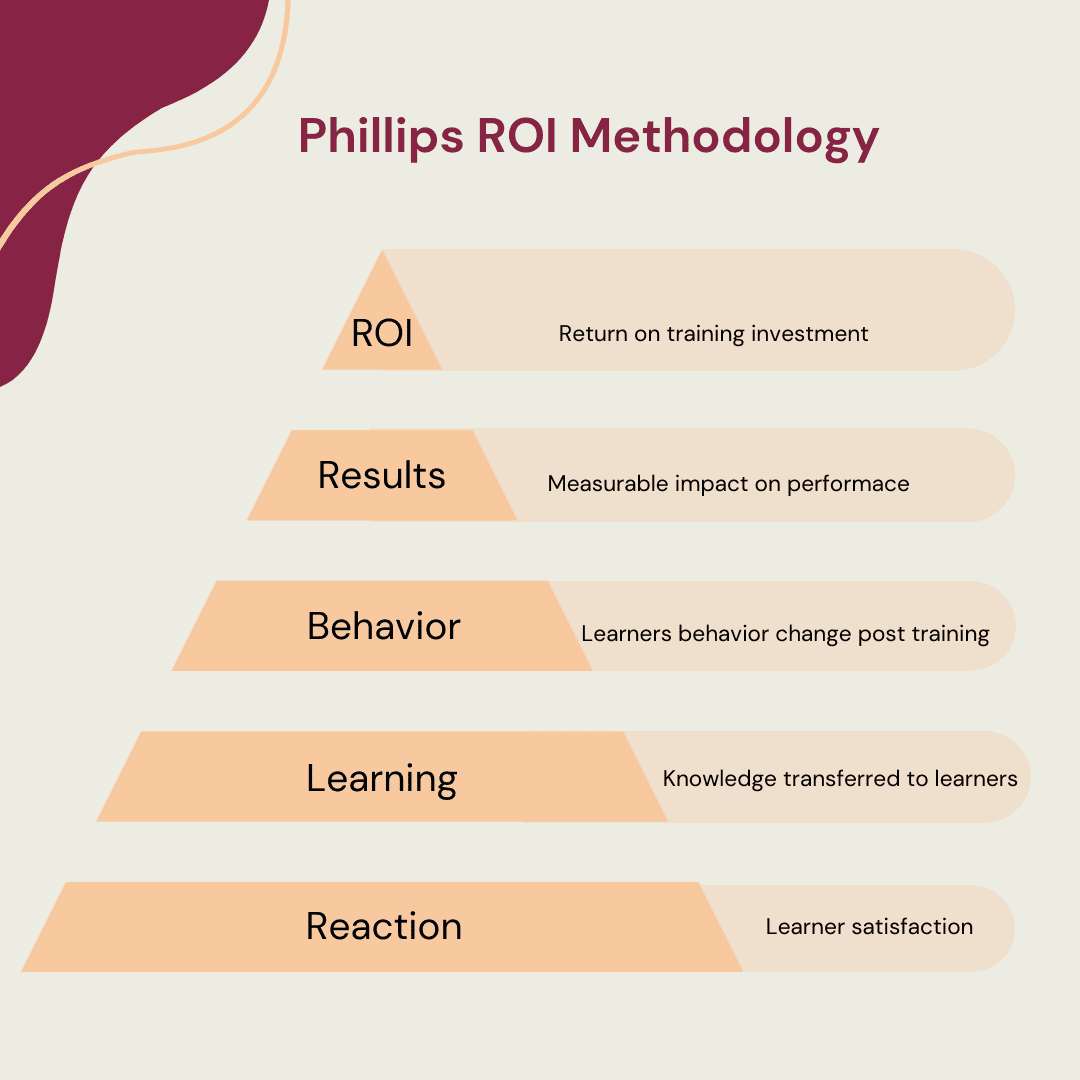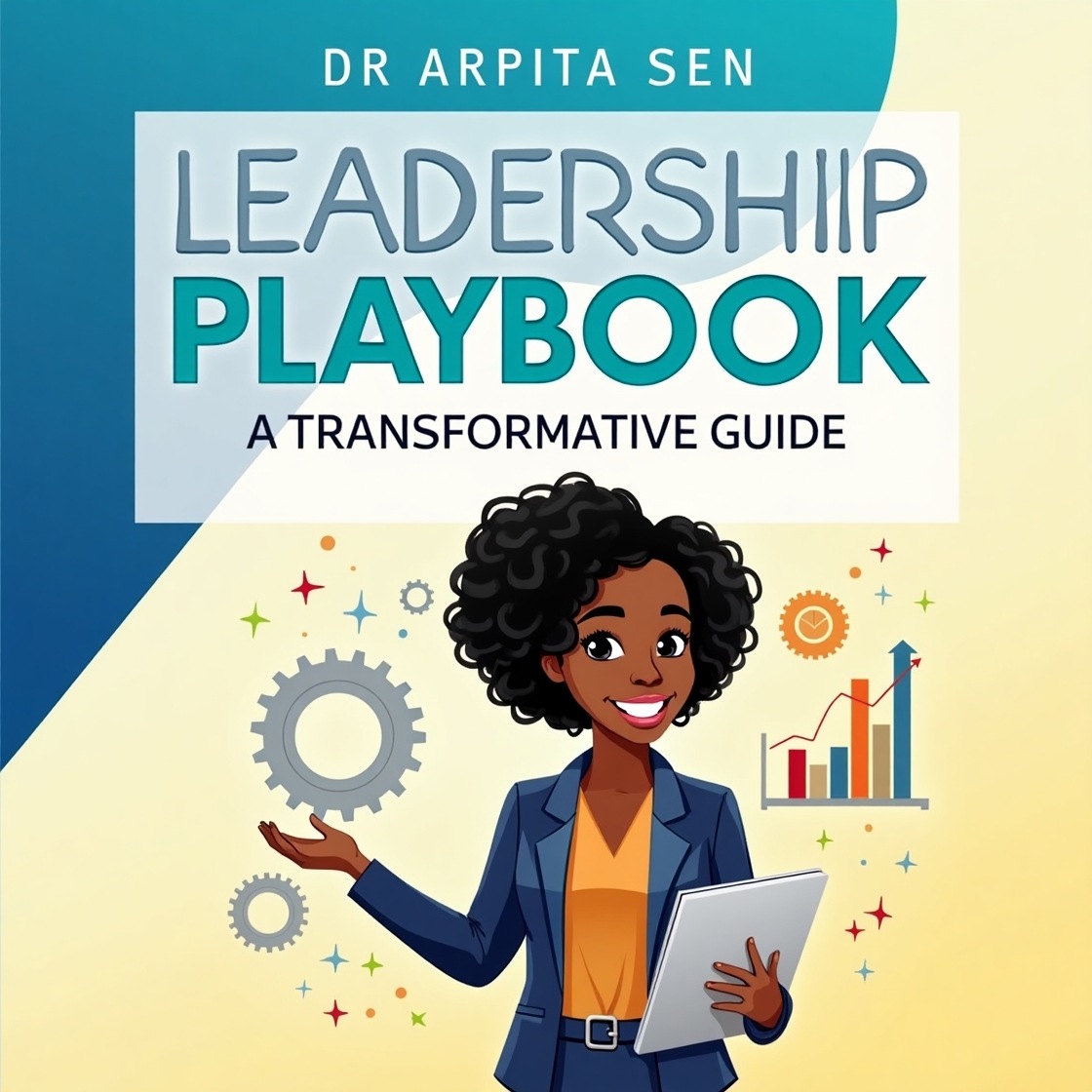In the fast-paced world of business, companies are constantly seeking ways to enhance employee skills and performance. One crucial aspect of organizational success lies in effective learning and development initiatives. Philips, a global technology leader, has established a robust Return on Investment (ROI) methodology to measure the effectiveness and value derived from its learning and development programs. This article explores Philips’ innovative approach to Learning and Development (L&D) and how its ROI methodology sets a benchmark for the industry.
Understanding Philips’ Commitment to Learning and Development:
Philips recognizes that investing in the growth and development of its employees is essential for staying competitive in a rapidly evolving market. The company places a strong emphasis on creating a culture of continuous learning, where employees are empowered to acquire new skills and knowledge. By fostering a learning-centric environment, Philips aims to not only enhance individual and team performance but also drive innovation and adaptability across the organization.

Key Components of Philips’ ROI Methodology:
- Alignment with Business Goals: Philips understands that successful L&D initiatives must align with the overall business strategy. The company carefully defines its business objectives and ensures that learning programs are designed to directly contribute to these goals. This alignment ensures that the investment in employee development directly translates into tangible business outcomes.
- Clear Objectives and Metrics: Before implementing any learning initiative, Philips sets clear, measurable objectives. These objectives go beyond mere participation rates or completion numbers; they focus on specific performance indicators that demonstrate the impact of the training on individual and team productivity. Metrics may include improvements in efficiency, reduction in errors, increased innovation, and other relevant key performance indicators (KPIs).
- Continuous Monitoring and Evaluation: Philips recognizes that learning is an ongoing process, and continuous monitoring is essential to gauge the effectiveness of its programs. Regular evaluations are conducted to assess the impact of training on employees’ knowledge, skills, and behaviors. This iterative approach allows for real-time adjustments to the learning programs, ensuring they remain aligned with the evolving needs of the business.
- Cost-Benefit Analysis: The ROI methodology at Philips extends beyond just evaluating the effectiveness of training. It incorporates a thorough cost-benefit analysis to determine the overall return on investment. This analysis considers not only the direct costs associated with training but also the indirect costs and benefits, such as increased employee morale, reduced turnover, and enhanced organizational agility.
- Employee Feedback and Engagement: Philips places a strong emphasis on gathering feedback directly from employees who participate in learning programs. This feedback provides valuable insights into the relevance and effectiveness of the training. Moreover, employee engagement is measured to understand the level of enthusiasm and commitment towards continuous learning, helping to refine future initiatives.
Benefits and Impact:
By implementing a robust ROI methodology in L&D, Philips has witnessed several benefits and positive impacts:
- Improved Performance: Employees who undergo targeted training programs show measurable improvements in their performance, contributing to increased productivity and efficiency.
- Innovation and Adaptability: A culture of continuous learning has fostered innovation within Philips. Employees are more adaptable to change, driving the organization’s ability to respond to market dynamics effectively.
- Talent Retention and Satisfaction: Investment in employee development has positively impacted talent retention. Employees feel valued and supported, leading to higher job satisfaction and a reduced likelihood of turnover.
- Enhanced Organizational Agility: The continuous monitoring and evaluation process ensures that learning programs remain responsive to market trends and business needs. This agility positions Philips as a dynamic and adaptive organization.
Step-wise Implementation of Philips’ ROI Methodology in Learning and Development:
Step 1: Needs Analysis
Before embarking on any learning initiative, Philips conducts a thorough needs analysis. This involves identifying skill gaps, assessing business goals, and understanding the specific competencies required to achieve those goals.
Step 2: Objective Setting
Clear and measurable objectives are established, aligning the learning programs with the identified needs and broader business objectives. These objectives serve as benchmarks against which the success of the training initiatives will be measured.
Step 3: Program Design and Delivery
Philips designs tailored training programs based on the identified needs and objectives. These programs encompass a variety of learning methods, including e-learning modules, workshops, mentorship programs, and on-the-job training. The delivery is dynamic, catering to different learning styles and preferences.
Step 4: Continuous Monitoring and Evaluation
Throughout the training period, continuous monitoring takes place. Progress is assessed through various metrics, including pre and post-training assessments, feedback surveys, and key performance indicators. This ongoing evaluation ensures that the training remains relevant and effective.
Step 5: Cost-Benefit Analysis
Philips conducts a comprehensive cost-benefit analysis, considering both direct and indirect costs associated with the training. The benefits, such as improved performance and increased productivity, are weighed against the investment made in the learning programs.
Step 6: Employee Feedback and Engagement
Employees’ opinions and experiences are actively sought through surveys and feedback sessions. This step provides valuable insights into the effectiveness of the training, allowing for adjustments and improvements.
Pros of Philips’ ROI Methodology:
- Alignment with Business Goals: Ensures that learning initiatives directly contribute to organizational objectives.
- Measurable Outcomes: Establishes clear and measurable objectives, allowing for tangible evaluation of the impact of training.
- Adaptability: Continuous monitoring enables real-time adjustments, ensuring that the learning programs remain responsive to evolving business needs.
- Comprehensive Cost-Benefit Analysis: Goes beyond direct costs, considering indirect benefits, contributing to a holistic understanding of the return on investment.
- Employee-Centric: Actively involves employees in the process, fostering engagement and a culture of continuous learning.
Cons of Philips’ ROI Methodology:
- Resource Intensive: Requires significant resources for continuous monitoring, evaluation, and the analysis of the cost-benefit aspect.
- Complexity: The comprehensive nature of the methodology may be challenging to implement for smaller organizations with limited resources.
- Time-Consuming: The thorough analysis and continuous monitoring may slow down the implementation of learning programs.
Comparison with Other Models:
While Philips’ ROI methodology is robust, other models like the Kirkpatrick Model and the Phillips ROI Model offer alternative approaches. The Kirkpatrick Model focuses on four levels of evaluation: reaction, learning, behavior, and results. The Phillips ROI Model extends this by adding a fifth level, ROI. These models may provide simpler alternatives for organizations with less extensive resources.
Integration with Other Models:
Philips’ ROI methodology can be used in conjunction with other models for a holistic L&D program. For instance, combining the Kirkpatrick Model with Philips’ approach allows organizations to benefit from both the simplicity of Kirkpatrick’s levels and the comprehensive analysis provided by Philips’ ROI methodology.
Companies Utilizing Similar Methodologies:
- IBM: IBM employs a comprehensive ROI methodology, aligning its learning initiatives with business goals and conducting thorough evaluations to measure the impact of training on organizational performance.
- General Electric (GE): GE is known for its results-driven approach to L&D, incorporating ROI methodologies to ensure that learning programs contribute directly to business success.
- AT&T: AT&T utilizes ROI methodologies to evaluate the effectiveness of its training programs, emphasizing the alignment of learning initiatives with organizational objectives.
- Google: Google is renowned for its innovative approach to employee development. The company emphasizes a culture of continuous learning through various initiatives, including the “Google Learning Center.” Google employs a data-driven approach, analyzing employee performance and skill development to tailor learning programs to individual needs.
- Microsoft: Microsoft places a strong emphasis on employee growth and development. The company utilizes a combination of formal training programs, mentorship initiatives, and continuous feedback mechanisms. Microsoft also incorporates technology-driven learning platforms to ensure accessibility and effectiveness in its global workforce.
- Deloitte: Deloitte employs a holistic approach to learning and development, integrating formal training programs with on-the-job experiences. The company utilizes the “Deloitte University” platform, offering a wide range of courses and resources for employee skill enhancement. Deloitte’s methodology focuses on creating a culture of lifelong learning.
- Salesforce: Salesforce prioritizes employee development through its “Trailhead” platform, providing a gamified and interactive learning experience. The platform offers a variety of modules and learning paths to help employees acquire new skills. Salesforce measures the success of its learning initiatives through a combination of user engagement metrics and the application of acquired skills in real-world scenarios.
- Accenture: Accenture employs a personalized learning approach, tailoring development programs to individual career paths and aspirations. The company utilizes technology-enabled platforms to provide a mix of virtual and classroom-based training. Accenture emphasizes continuous feedback and evaluation to ensure that learning initiatives align with both individual and organizational goals.
- Procter & Gamble (P&G): P&G is committed to fostering a culture of learning and innovation. The company utilizes a combination of formal training programs, mentorship, and cross-functional experiences. P&G employs a competency-based model, aligning learning initiatives with the specific skills and competencies required for success in various roles within the organization.
Conclusion:
Philips’ ROI methodology in learning and development serves as a compelling model for organizations seeking to maximize the value derived from their training initiatives. By aligning learning programs with business goals, setting clear objectives, and conducting thorough evaluations, Philips ensures that its investment in employee development translates into tangible and sustainable business outcomes. As the business landscape continues to evolve, adopting a comprehensive ROI methodology in L&D becomes increasingly critical for organizations aiming to thrive in the competitive global market.











